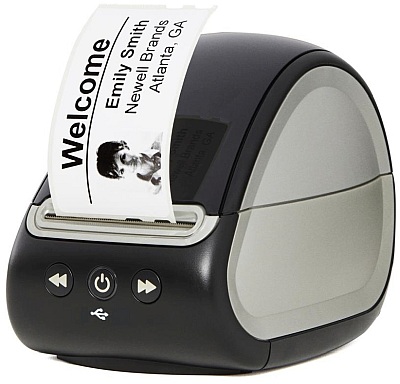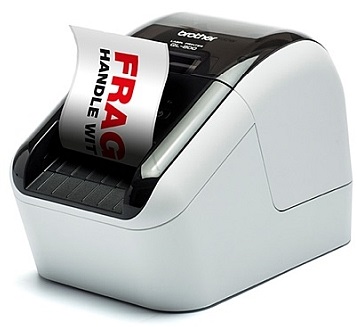Brother QL-800 Series vs. Dymo LabelWriter 550 Series: Comparison and Review
In the world of label printing, two titans stand out: Brother and Dymo. Both offer a range of printers designed to streamline the organization of any office, mailroom, or warehouse. Today, we pit the Brother QL-800 series against the new Dymo LabelWriter 550 series to see which brand comes out on top.
Consumables
Both brands use direct thermal printing, where the printer uses heat to print on heat sensitive labels. This means they do not require toners, or inks, or ribbons - just the labels.
This technology does mean that you need to use direct thermal (heat sensitive) labels, and both brands tie you in to using their own range of labels. Both ranges have a limited variety of different types and sizes of labels, so if you have a specific size requirement then it would be best to check out their respective label ranges first, as the absence of a suitable size in one range may end up being a more important factor than the printer features.
Dymo has added new "Durable" labels to their range, which are tougher and more resistant to abrasion, temperatures, water, oil, solvents, temperatures etc. These are more expensive than their regular labels, but give Dymo the edge if you need labels for a harsher environment.

Dymo Labelwriter 500 Label Printer
Print Speed and Efficiency
When it comes to speed, the Brother printers take the lead. The QL-810W and QL-820NWB boast impressive speeds of up to 110 labels per minute, outpacing the Dymo LabelWriter 550 Turbo's 90 labels per minute. The entry-level Brother QL-800 also holds its own with a respectable 93 labels per minute, versus the standard Dymo 550's 62 labels per minute. For businesses that are printing a large number of labels in one go this may be a consideration, but in reality most people aren't going to be printing enough labels for this to be a factor. And to be fair, if printing a couple of labels at a time most people wouldn't even notice the difference.
Connectivity Options
Connectivity is another area where Brother shows its strength. The QL-820NWB, with USB, Wi-Fi, Ethernet, and Bluetooth, is undoubtedly the most versatile, catering to a multitude of office setups and user preferences albeit at a high price. The Dymo 550 offers only USB connectivity, and the the 550 Turbo adds a LAN option, which could limit Dymo's appeal to those seeking wireless options.
Unique Features
The new Dymo Labelwriters feature Automatic Label Recognition™, a feature that helps prevent waste and ensures users know exactly what labels are installed and how many are left on the roll.
Brother on the other hand has the ability to print in black and red (currently on a single specific size of label only) which adds a bit of colour to an otherwise monochrome range. Their label range also includes continuous labels, allowing the printing of banners or signs (up to 1m in length) - something sadly lacking in the Dymo range.
Dymo's Dominance in the Market: A Testament to Reliability
An often-overlooked metric in the decision-making process is market share, which speaks volumes about user preference and brand reliability. Dymo, with a commanding 70% share of the market, has a clear lead.
Despite the Brother machines having several advantages on paper, in practice customers are overwhelmingly choosing Dymo, suggesting a certain level of trust in the Brand, supported by repeat buying and word of mouth recommendations, and perhaps greater compatibility with 3rd party software.
Software and Usability
Both brands offer proprietary software that aids in label creation, allowing the use to create labels from simple designs to complex labels incorporating barcodes and images. If using 3rd party label software, or printing directly from a 3rd party application you should check with the software company to see which label printers they support.
Cost Considerations
In terms of initial investment, the higher end of Brother's range has a higher entry point but offers increased speed and functionality. At the entry level the street price on both machines varies, but is roughly the same.
Conclusion: Which is the Better Choice?
The decision between Brother and Dymo ultimately hinges on the specific needs of your business.
If your operation requires the flexibility of multiple connectivity options, the Brother QL-800 series, particularly the QL-820NWB, is hard to beat. Its speed, versatility, and the ability to print in two colors make it suitable for businesses with diverse labeling needs.
On the other hand, if you're looking for a straightforward, cost-effective solution with smart features like Automatic Label Recognition™, the Dymo LabelWriter 550 series is an excellent choice, especially for small to medium-sized businesses that prioritize simplicity and efficiency.

